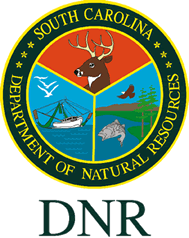South Carolina DNR Says: Baiting Deer in Black Bear Range Not Wise

A recent study indicates that there may be as many as 800 black bears in the coastal plain of South Carolina. Most of these coastal bears, about 500, are found in Horry, Georgetown, Marion, Williamsburg, Charleston, and Berkeley counties.
Baiting for deer is not prohibited in these counties and the last few years the S.C. Department of Natural Resources (DNR) has noted an increase in the number of calls it receives from deer hunters complaining of bears eating their deer bait. There have even been reports of bears refusing to leave a “corn pile” when the deer hunter enters the area to hunt.
However, this is completely natural behavior on the part of bears according to Deanna Ruth, DNR’s coastal bear biologist. Hunters should understand that bears, as well as, many species of wildlife are attracted to and will eat bait that is intended for deer. On the other hand, this problem can be easily solved and deer hunters who are concerned with bears eating their deer bait should either stop using bait for a minimum of two weeks or stop using bait altogether.
Bears roam their home range looking for food and under natural circumstances food sources are available in limited amounts and over a limited time frame. Bears that do not encounter the bait will no longer focus on the specific area where the bait is being placed. Additionally, in other states that allow baiting for deer, hunters have found that scattering the bait (primarily corn) over a wide area decreases bear visitations. Bears are intelligent, but lazy creatures. Deer will continue to visit the area and pick around to find the bait, whereas, bears will often lose interest and move on to other food sources.

